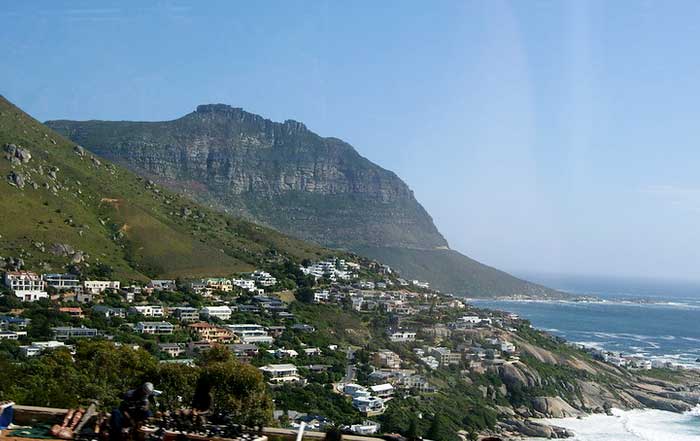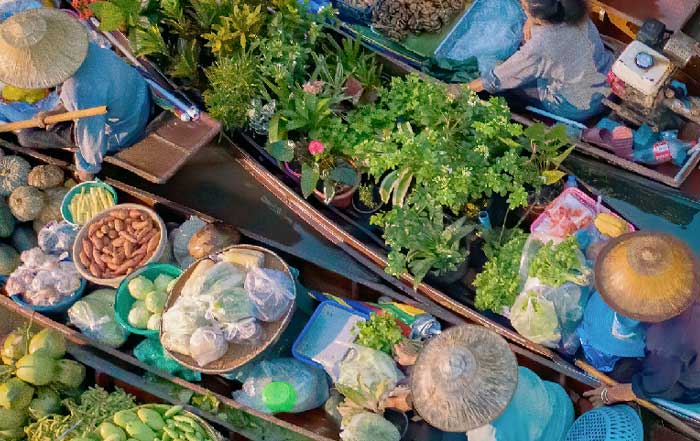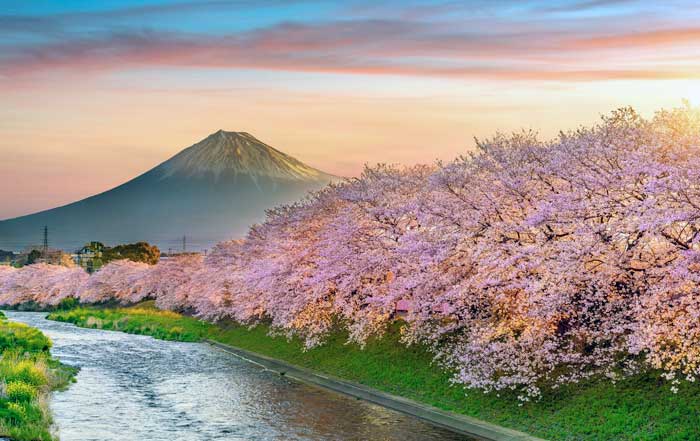Family adventure vacations represent more than just a break from routine; they are opportunities to forge deeper connections, foster personal growth, and create lasting memories that transcend the ordinary. In a world where technology often dominates attention and schedules are increasingly hectic, dedicating time to explore new horizons together can be both refreshing and transformative. Such vacations offer a unique blend of excitement, education, and bonding that can significantly enrich the lives of all family members.
The Importance of Family Adventure Vacations
Engaging in adventurous activities as a family unit offers myriad benefits that extend beyond the immediate thrill of the experience. These vacations encourage physical activity in an enjoyable context, promoting health and well-being for both children and adults. They also present challenges that require teamwork, enhancing communication skills and strengthening familial bonds. By navigating new environments and overcoming obstacles together, families cultivate resilience and a shared sense of accomplishment.
From an educational perspective, adventure vacations expose family members to diverse cultures, ecosystems, and histories. Whether it's learning about the delicate balance of rainforest ecosystems, understanding the geological forces that shape our planet, or immersing in the traditions of indigenous communities, these experiences broaden horizons and foster a deeper appreciation for the world.
Criteria for Selecting Family-Friendly Adventure Destinations
Choosing the ideal destination for a family adventure vacation involves careful consideration of several key factors to ensure safety, enjoyment, and enrichment for all participants.
Age-Appropriate Activities
Selecting destinations that offer a range of activities suitable for different age groups is crucial. Younger children may require less physically demanding options, while teenagers might seek more challenging pursuits. Destinations that cater to various ages can provide tailored experiences, keeping everyone engaged and satisfied.
Safety Standards
Safety is paramount when planning any adventure. Researching the safety records of tour operators, verifying adherence to international safety standards, and ensuring that guides are certified and experienced can mitigate risks associated with adventure activities. It's also important to consider the availability of medical facilities and emergency services.
Cultural Enrichment
Destinations offering cultural experiences enhance the educational value of the vacation. Interacting with local communities, participating in traditional customs, and exploring historical sites provide deep insights into different ways of life and broaden global perspectives.
Accessibility and Amenities
While adventure is a key component, access to comfortable accommodations and essential amenities is important, especially for families with young children or elderly members. Considerations should include the availability of medical facilities, dietary accommodations, and transportation logistics.
Top Recommended Family Adventure Vacations
Safari in Kenya
Overview
Kenya, situated in East Africa, is renowned for its breathtaking landscapes, abundant wildlife, and rich cultural heritage. A family safari in Kenya offers an extraordinary opportunity to observe animals such as lions, elephants, giraffes, and zebras in their natural habitats, creating unforgettable experiences that combine adventure with education.
Activities
Game Drives: Guided tours through national parks like the Maasai Mara enable families to witness the Great Migration, where millions of wildebeest and zebras traverse the plains in a dramatic display of nature's cycles.
Cultural Visits: Interactions with the Maasai people provide insights into traditional ways of life. Families can visit villages, learn about Maasai customs, and participate in customary dances and ceremonies.
Nature Walks: Educational walks led by local experts teach children about the flora and fauna of the savannah, emphasizing the importance of conservation and respect for wildlife.
Accommodations
Family-friendly lodges and tented camps offer comfortable amenities, often with opportunities for night-time wildlife viewing from the safety of the camp. These accommodations frequently provide educational programs for children, enhancing the overall experience.
Planning Resources
For comprehensive planning and information, visit the official Kenya Tourism Board.
Skiing in the Swiss Alps
Overview
The Swiss Alps offer some of the world's most picturesque and well-maintained ski resorts, combining physical activity with stunning natural beauty. Skiing in Switzerland provides families with an opportunity to enjoy winter sports amidst breathtaking mountain scenery, while also experiencing Swiss culture and hospitality.
Activities
Ski Lessons: Resorts like Zermatt and St. Moritz offer ski schools for all ages and skill levels, ensuring that both novices and experienced skiers can enjoy the slopes safely and confidently.
Snowboarding and Sledding: Alternative snow sports provide variety and excitement, catering to different interests within the family.
Winter Hiking and Snowshoeing: Well-marked trails allow families to explore the winter landscape at a comfortable pace, enjoying panoramic views and fresh alpine air.
Cultural Experiences
Culinary Delights: Sampling traditional Swiss cuisine, such as fondue and raclette, offers a delicious way to experience local culture.
Festivals and Events: Seasonal festivals provide entertainment and a glimpse into regional traditions, enhancing the cultural richness of the vacation.
Accommodations
Swiss resorts are known for their high-quality accommodations, offering family suites, child-care services, and amenities like indoor pools and game rooms to keep everyone entertained off the slopes.
Planning Resources
Discover more at Switzerland Tourism.
Exploring the Great Barrier Reef in Australia
Overview
The Great Barrier Reef, located off the coast of Queensland, Australia, is the largest coral reef system in the world and a UNESCO World Heritage site. Exploring this natural wonder allows families to witness an incredible diversity of marine life and learn about the importance of environmental conservation.
Activities
Snorkeling and Diving: Families can explore vibrant coral gardens teeming with marine life, suitable for various skill levels. Even beginners can enjoy snorkeling in shallow waters, observing colorful fish, sea turtles, and other marine creatures.
Glass-Bottom Boat Tours: For those who prefer not to swim, these tours offer a window into the underwater world without getting wet, making the reef accessible to all ages.
Marine Biology Workshops: Educational programs teach about coral ecology, conservation efforts, and the impact of climate change on marine environments, fostering a deeper understanding and respect for nature.
Environmental Considerations
Participating in eco-friendly tours and following guidelines to protect the reef is crucial. Families can engage in responsible tourism by choosing operators committed to sustainability and by following best practices to minimize environmental impact.
Accommodations
Coastal towns like Cairns and Port Douglas offer a range of family-friendly hotels and resorts with easy access to reef tours and other attractions.
Planning Resources
Plan your trip with Tourism Australia.
Hiking in the Grand Canyon, USA
Overview
The Grand Canyon, one of the most iconic natural landmarks in the United States, offers a vast and awe-inspiring landscape carved by the Colorado River over millions of years. Its immense scale and geological significance provide a dramatic setting for family adventures.
Activities
Hiking Trails: The Grand Canyon features numerous trails suitable for families, from leisurely rim walks to more challenging treks into the canyon. Trails like the South Kaibab and Bright Angel offer stunning vistas and educational signage.
Mule Rides: Guided mule trips provide a unique way to experience the canyon's depths, suitable for families with older children.
Ranger Programs: The National Park Service offers educational programs and guided tours that teach about the canyon's geology, ecology, and history.
Educational Opportunities
Geology Lessons: Families can learn about the rock layers that reveal Earth's history, fostering an appreciation for natural sciences.
Cultural Insights: Exploring sites significant to Native American tribes provides understanding of the cultural heritage and traditions of the region.
Accommodations
Within the park, lodges and campgrounds offer convenient access to trails and activities. Accommodations range from rustic cabins to modern hotels, catering to different preferences.
Planning Resources
Learn more at the National Park Service.
Cultural Exploration in Japan
Overview
Japan offers a captivating blend of ancient traditions and modern innovation. Families visiting Japan can immerse themselves in a culture rich with history, art, and technology, providing diverse experiences that are both educational and entertaining.
Activities
Historical Sites: Visiting temples and shrines in cities like Kyoto and Nara introduces families to Japan's spiritual and architectural heritage. Iconic sites like the Kinkaku-ji (Golden Pavilion) and Todai-ji Temple offer glimpses into the country's past.
Cultural Workshops: Participating in traditional activities such as tea ceremonies, calligraphy, and kimono dressing allows families to engage directly with Japanese customs.
Modern Attractions: Exploring Tokyo's bustling districts, visiting technology centers, and enjoying theme parks like Tokyo Disneyland and Universal Studios Japan provide contemporary thrills.
Outdoor Adventures
Mount Fuji: Climbing or viewing Japan's highest peak offers a symbolically significant experience. During the climbing season, guided hikes are available for families with older children.
Nature Trails: Japan's national parks and rural areas offer hiking, hot springs (onsen), and seasonal activities like cherry blossom viewing.
Accommodations
Japan provides a variety of accommodations, from traditional ryokans with tatami rooms and futon bedding to modern hotels with all the latest amenities. Many offer family-friendly services and cultural experiences.
Planning Resources
Explore options at the Japan National Tourism Organization.
Wildlife and Nature in Costa Rica
Overview
Costa Rica is a leader in eco-tourism, known for its lush rainforests, diverse wildlife, and commitment to sustainability. Families can immerse themselves in nature while engaging in exciting activities that promote environmental awareness.
Activities
Zip-Lining: Soaring above the rainforest canopy provides an exhilarating way to observe the ecosystem from a unique vantage point.
Rainforest Exploration: Guided hikes through national parks like Manuel Antonio and Corcovado reveal exotic wildlife, including monkeys, sloths, toucans, and vibrant plant life.
Volcano Tours: Visiting active volcanoes such as Arenal offers opportunities for hiking, hot springs relaxation, and geological education.
Educational Programs
Conservation Projects: Families can participate in programs like sea turtle nesting conservation, providing hands-on experiences in environmental stewardship.
Agricultural Tours: Visiting coffee plantations and organic farms introduces sustainable practices and the origins of everyday products.
Accommodations
Eco-lodges and resorts in Costa Rica often incorporate sustainable practices and offer educational programs, blending comfort with environmental responsibility.
Planning Resources
Get details from Visit Costa Rica.
Family Adventure Destination Quiz
Exploring the Galapagos Islands, Ecuador
Overview
The Galapagos Islands are a UNESCO World Heritage site, renowned for their unique wildlife and significance to Charles Darwin's theory of evolution. A visit offers families an unparalleled opportunity to observe species found nowhere else on Earth.
Activities
Wildlife Observation: Guided tours allow close encounters with giant tortoises, marine iguanas, blue-footed boobies, and other endemic species.
Snorkeling and Diving: Exploring the underwater world reveals vibrant marine life, including sea turtles, rays, and tropical fish.
Kayaking and Hiking: Active exploration of the islands' diverse landscapes, from volcanic formations to secluded beaches.
Conservation Focus
Strict regulations protect the fragile ecosystems. Visitors are encouraged to support conservation efforts and follow guidelines to minimize environmental impact.
Accommodations
Options include eco-friendly lodges and live-aboard boats, providing immersive experiences while adhering to sustainability principles.
Planning Resources
For official information, visit the Galapagos Conservancy.
Adventure in Iceland
Overview
Iceland's dramatic landscapes, featuring volcanoes, glaciers, geysers, and waterfalls, create a unique setting for adventure. The country's natural phenomena offer educational and thrilling experiences for families.
Activities
Glacier Exploration: Guided glacier hikes and ice cave tours introduce families to glacial formations and the effects of climate change.
Geothermal Wonders: Visiting geysers and relaxing in hot springs like the Blue Lagoon combines science education with leisure.
Northern Lights: Observing the aurora borealis provides a magical experience and an opportunity to learn about atmospheric sciences.
Cultural Experiences
Viking Heritage: Museums and historical sites offer insights into Iceland's Norse history and folklore.
Local Cuisine: Tasting traditional dishes expands cultural understanding and culinary horizons.
Accommodations
Family-friendly hotels and guesthouses often feature geothermal heating and access to natural attractions.
Planning Resources
Refer to Visit Iceland.
Cultural and Adventure Trip in South Africa
Overview
South Africa offers a rich tapestry of experiences, from wildlife safaris to cultural explorations. Its diverse landscapes and history provide a multifaceted adventure for families.
Activities
Safari Adventures: Parks like Kruger National Park offer guided safaris to see lions, elephants, rhinos, and other wildlife.
Table Mountain: Exploring one of the New Seven Wonders of Nature via hiking or cable car in Cape Town.
Cultural Tours: Visiting historical sites like Robben Island and engaging with local communities to learn about South Africa's history and diversity.
Accommodations
From luxury lodges to family-oriented hotels, accommodations often include programs for children and emphasize safety and comfort.
Planning Resources
Visit South African Tourism for detailed information.
Kayaking in Norway's Fjords
Overview
Norway's fjords, with their deep blue waters surrounded by towering cliffs and cascading waterfalls, offer a serene setting for adventure. Kayaking through these natural wonders provides a peaceful yet exhilarating experience.
Activities
Kayaking Expeditions: Suitable for beginners and experienced paddlers, families can explore at their own pace, discovering hidden coves and wildlife.
Hiking and Biking: Trails along the fjords offer stunning viewpoints and opportunities to explore quaint villages.
Cultural Experiences: Learning about Viking history and Norwegian traditions enriches the journey.
Accommodations
Cozy lodges and guesthouses provide comfortable bases, often featuring local cuisine and personalized hospitality.
Planning Resources
For travel guides, visit Visit Norway.
Tips for Planning a Successful Family Adventure Vacation
Advance Planning
Research Thoroughly: Understanding the destination's climate, best travel times, and cultural nuances enhances preparedness.
Early Bookings: Secure accommodations and activities well in advance to ensure availability, especially during peak seasons.
Travel Documents: Verify passport validity, visa requirements, and any necessary permits.
Involve the Children
Interactive Planning: Engage children in choosing activities, fostering excitement and ensuring their interests are considered.
Educational Preparation: Reading books or watching documentaries about the destination can enhance anticipation and understanding.
Pack Appropriately
Essential Gear: Bring appropriate clothing and equipment for planned activities, considering weather and terrain.
Comfort Items: Familiar items can help younger children adjust to new environments.
Documentation: Keep copies of important documents and consider digital backups.
Health Precautions
Medical Advice: Consult healthcare providers about vaccinations and health advisories.
Travel Insurance: Comprehensive coverage can provide peace of mind for unexpected situations.
Emergency Plans: Have contingency plans and know local emergency numbers.
Local Customs and Etiquette
Cultural Respect: Learning basic phrases and customs shows respect and can enhance interactions.
Dress Codes: Be mindful of appropriate attire for cultural sites and activities.
Environmental Responsibility: Practice sustainable tourism by minimizing waste and respecting natural habitats.
Budget Considerations
Financial Planning: Establish a budget that includes all expenses, with a buffer for unexpected costs.
Currency Exchange: Understand local currency and exchange rates.
Cost-Saving Opportunities: Look for family packages or off-peak travel times to reduce expenses.
Technology and Connectivity
Communication Plans: Determine how you will stay connected, considering international plans or local SIM cards.
Device Management: Decide on the use of devices to balance connectivity with family time.
Useful Apps: Utilize travel apps for navigation, translation, and local information.
Go And Enjoy Some Quality Time Away!
Embarking on a family adventure vacation is more than just a journey to new places; it's an investment in shared experiences that strengthen bonds and create a tapestry of memories lasting a lifetime. By thoughtfully selecting destinations that offer a harmonious blend of excitement, education, and cultural immersion, families can ensure that every member gains valuable insights and joy from the trip.
Whether witnessing the majestic wildlife of Kenya, conquering the slopes of the Swiss Alps, exploring the depths of the Great Barrier Reef, standing in awe at the edge of the Grand Canyon, immersing in the rich traditions of Japan, or venturing into the diverse landscapes of Costa Rica, the opportunities for growth and connection are boundless.
Careful planning and consideration of each family member's needs and interests are essential to creating a successful adventure. Embracing the spirit of exploration and stepping outside comfort zones not only enriches the individual but also strengthens the family unit.
In a world full of wonders waiting to be discovered, now is the perfect time to embark on an adventure that will create unforgettable memories and inspire a lifelong love of travel and learning. The experiences gained and lessons learned on such journeys are invaluable treasures that families will carry with them, shaping their perspectives and enriching their lives for years to come.










